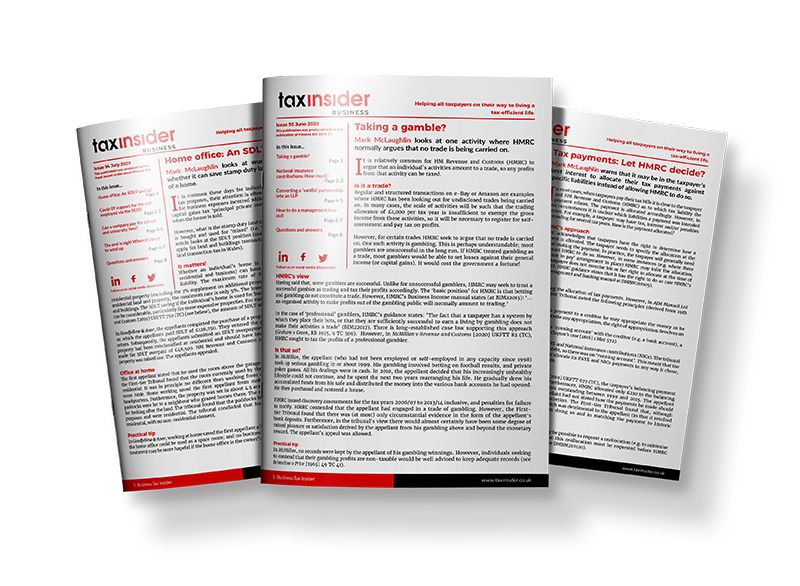Ken Moody warns that the waiver or release of intercompany debt between connected companies, while tax neutral under loan relationships rules, may not be advisable for completely different reasons.
This is a sample article from our tax saving newsletters - Try Business Tax Insider today.
----------------------
Picture the following: Mr C is sole director and shareholder of two companies (‘A’ and ‘B’). Company A has made good profits and has surplus cash on deposit. Company B has not done well and has been financially supported by Mr C.
It has been suggested that A should make a loan to B, which will use the money to repay the director’s loan, and that A will subsequently write off the loan.
A and B are connected because the same person controls both. In that case, the creditor company gets no relief for impairment of intercompany debt, and the debtor company is not normally taxable on the credit to its profit and loss account in respect of the release of the debt.
Is it a ‘loan relationship’?
Unfortunately, like many ‘best laid schemes’, things may not go according to plan. The definition of ‘loan relationship’ is, briefly, a money debt arising from a transaction for the lending of money. If the intention from the beginning is to write off the debt, it is questionable whether this represents a loan relationship in the first place.
It may be possible to remedy this by the issue of an ‘instrument (such as a promissory note or debenture) for the purpose of representing…security for the debt’ (see CTA 2009, s 303(3)). However, since the underlying purpose would, instead, be to implement the strategy, this may not succeed. But that’s not the only problem.
Is it a distribution?
Another question which arises is whether the arrangement for B to repay Mr C out of monies advanced by A is an indirect distribution by A to Mr C. What is a distribution is a question of fact where substance prevails over form. If, therefore, the loan is in substance a distribution, the first thing which follows from that is that A must have sufficient distributable reserves out of which to make the distribution. Since A is flush with cash, let’s assume it does.
For tax purposes, a distribution includes any distribution out of the assets of a company ‘in respect of shares in the company’ other than by way of repayment of capital or for ‘new consideration’ (CTA 2010, s 1000(1)B). The fact that neither the loan from A to B nor the write-off of the loan could be made other than at Mr C’s instigation suggests that the distribution is in respect of Mr C’s shares in A. I have seen tax counsel’s opinion which reached that conclusion in not dissimilar circumstances.
It may be objected that the distribution is not to Mr C but to company B and is exempt for corporation tax purposes. Be that as it may, there is nothing to say that, for income tax purposes, a distribution in respect of shares in a company must be received personally by the shareholder. The rules apply to both direct and indirect distributions. The arrangement for A to advance money to B and subsequently write off the debt directly benefits Mr C by enabling B to repay his director’s loan, which would also increase the value of his shares in B.
At first sight, the strategy seems unobjectionable. After all, Mr C is only recovering the money which he had lent to B. But tax doesn’t operate ‘in the round’. It’s not the repayment by B which is the fundamental problem; it’s that the money is coming out of the assets of A.
Practical tip
The obvious practical tip would be don’t do it! It would have been better for company B to be financed by company A rather than Mr C personally. If the debt proved irrecoverable, the connected company debt rules would apply as mentioned earlier, but Mr C would be much better off.




